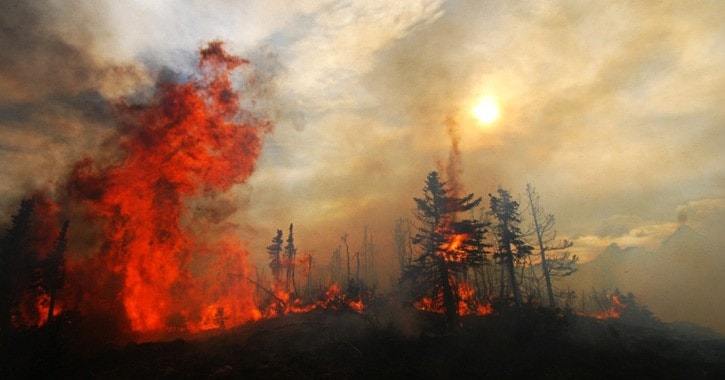Firefighters in Glacier National Park are letting a fire in the Beaver Valley burn as part of a wildfire management strategy.
The Times Review spoke to Simon Hunt, the fire management officer for Mt. Revelstoke and Glacier National Parks, about the wildfire situation in the parks. Outside the parks, fire fighters have been battling a series of spot fires caused by dry weather and recent tunderstorms.
The Bald Hills fire is about 75 hectares in size and is located about 20 kilometres south of the Trans-Canada Highway in the Beaver Valley area. It was caused by a lightning strike on Saturday, Aug. 10.
The fire is one of four in the national parks in the past two weeks, all of which were caused by lightning. On Aug. 7, a small fire was spotted above the Giant Cedars Boardwalk in Mt. Revelstoke National Park. On Aug. 10, another fire was spotted in Mt. Revelstoke National Park north of the Revelstoke Dam. That evening, the fire started in the Bald Hills.
On Aug. 12, a fire started on a steep slope on Ross Peak above the Trans-Canada Highway.
The two fires in Mt. Revelstoke National Park were extinguished. The fire on Ross Peak is being monitored and held at its current 0.5-hectare size through helicopter bucketing.
While Parks Canada initial attack crews worked on other fires, the Bald Hills fire grew to more than 70 hectares. "We developed a strategy that would meet risk management objectives and ecological objectives for this Bald Hills fire," Hunt said.
The fire is located near the eastern boundary of Glacier National Park. To prevent the fire from spreading outside the park, fire crews conducted controlled burns of several islands of trees near the park's boundary.
"We used precision burning – hand ignition – to carefully burn out the fuels between the fire and the park boundary," said Hunt.
Two helicopters were on standby while fire crew conducted the burns, but Hunt said they were not needed and the burns "were completely successful."
The Bald Hills fire will create a natural fire break at the midpoint of the Beaver Valley, said Hunt. Last summer, a fire on the Prairie Hills area of the Beaver Valley was allowed to burn to create a break further north, near the Trans-Canada Highway.
The fires help with risk management and with restoring ecological integrity in the parks. Hunt said he is now working on a long-term management strategy for the fire.
"Fire is good if we can keep it inside the park," he said. "In essence we're creating a patchwork quilt of regeneration and natural fire breaks in the Beaver Valley."
